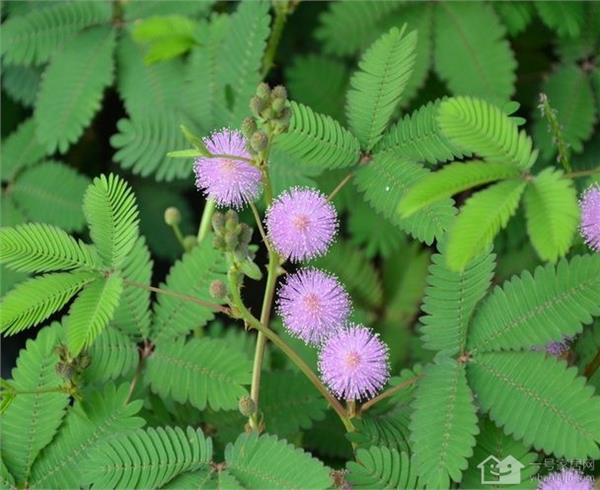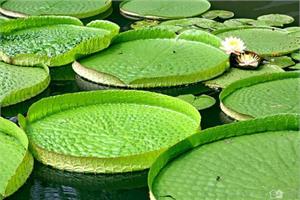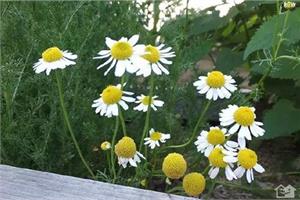How to cultivate mimosa? what are the characteristics of mimosa?
Mimosa, also known as inductive grass, drinking grass, mimosa, etc., I believe many people have seen it, as long as you gently touch it will put the leaves together, very lovely, attracted the attention of many people. Some friends want to raise mimosa at home, but they don't know much about it, so they want to ask how to raise mimosa and what are its characteristics.

The characteristics of mimosa
What are the characteristics of mimosa? Unlike animals, plants do not have a nervous system or muscles, and they do not perceive external stimuli, while mimosa is different from ordinary plants. When touched by the outside world, the petiole is drooping and the small leaves are closed. This action is understood as "shy", so it is called mimosa, mimosa and ugly grass.
If the leaves of mimosa are touched, they will close immediately. The more powerful they are, the faster they close, and the whole leaves will hang down as if they are weak, and the whole action will be completed in a few seconds. The special ability of mimosa has its historical roots. Its hometown is in Brazil in tropical South America, where there are often strong winds and heavy rain. Whenever the first drop of rain hits the leaf, the leaf immediately closes and the petiole droops to avoid the damage caused by the storm. This is a kind of adaptation to the change of external environmental conditions. What are the characteristics of mimosa? In addition, the exercise of mimosa can also be seen as a way of self-defense. When an animal touches it, it closes its leaves, and animals dare not eat it any more.
Medical value of mimosa
Whole grass (mimosa): sweet, astringent, cool. Calming the mind, clearing heat and detoxification. For vomiting and diarrhea, insomnia, infantile accumulation, eye swelling and pain, deep abscess, banded vesicular rash. Root (including mimosa root): astringent, slightly bitter. poisonous. Relieving cough and resolving phlegm, promoting dampness and dredging collaterals, harmonizing the stomach and eliminating accumulation. For cough, phlegm and asthma, rheumatic arthralgia, infantile indigestion.
Prediction characteristics of mimosa
Mimosa is a wonderful plant that can predict changes in the weather. If you touch it with your hand, its leaves close quickly and open slowly, indicating that the weather will clear up; if you touch mimosa, its leaves contract slowly, droop slowly, or even reopen a little bit, this means that the weather will change from sunny to overcast or it is going to rain.
Ornamental characteristics of mimosa
Mimosa now do more ornamental plant cultivation in the family, mimosa plant shape scattered, feather leaves slender and beautiful, its leaves are closed at a touch; mimosa flowers are many and beautiful, charming, giving people the impression of weak and elegant. It can be planted in the corner of the courtyard or potted in the window. When giving flowers, gently cover the potted plants with pink tulle and tie them with pink ribbons and knots. It would be more interesting if you could adorn it with pink mohair balls.
Culture methods of mimosa
Mimosa has strong habits and grows rapidly. The growing season can be placed on the balcony or in the yard, requiring the soil to be deep, fertile and moist.
Winter should be moved to the indoor windowsill, the indoor temperature is about 10 ℃ can safely pass the winter. Under sunny conditions, the roots grow fast and need to be watered every day.
When it is hot and dry in summer, it should be watered in the morning and in the evening. If there is no water, the leaves will droop and even turn yellow, and they will no longer be closed when touched. Topdressing was applied every half a month in the seedling stage.
If you do not want the plant to be too large, you should reduce the amount of fertilizer applied. The mimosa leaflet is small and pinnately arranged, and after touching the leaflet, it closes immediately. If the shock is large, the stimulus can spread to the whole leaf, and the total petiole will also droop, and may even be transmitted to the adjacent leaf to make its petiole droop.
The above is the relevant introduction of this article, I believe you have a simple understanding of this after reading it, if necessary, you can continue to pay attention to the No. 1 home network for more information.
Related
- Wuhan Hospital Iron Tree Blooming Result Was Instantly Frightened by the Gardener Master
- Which variety of camellia is the most fragrant and best? Which one do you like best?
- What is the small blue coat, the breeding methods and matters needing attention of the succulent plant
- Dormancy time and maintenance management of succulent plants during dormancy
- Minas succulent how to raise, Minas succulent plant pictures
- What are the varieties of winter succulent plants
- How to raise succulent plants in twelve rolls? let's take a look at some experience of breeding twelve rolls.
- Attention should be paid to water control for succulent plants during dormant period (winter and summer)
- Watering experience of twelve rolls of succulent plants
- Techniques for fertilizing succulent plants. An article will let you know how to fertilize succulent plants.



